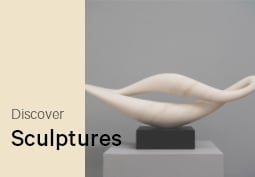Articles and Features
Fritz Lang’s Metropolis: How the Iconic Silent Film Took Inspiration from Art Movements
By Shira Wolfe
“I looked into the streets – the glaring lights and the tall buildings – and there I conceived Metropolis. The buildings seemed to be a vertical sail, scintillating and very light… suspended in the dark sky to dazzle, distract and hypnotize”.
Fritz Lang
Metropolis is one of the great masterpieces of silent cinema. Released in 1927, it is an Expressionistic science-fiction film directed by Fritz Lang, and produced in the Babelsberg Studios for Universum Film A.G. (UFA). The film was realised in Germany during the Weimar period, and is set in the year 2000, in a futuristic urban dystopia. Influences from various art movements and types of architecture can be detected throughout the film, with Art Deco, Bauhaus, Futurism and even some Gothic influences visible in the incredible set design and architecture. Today, the distinctive style of Metropolis in turn offers endless inspiration for artists and designers. We take a look at the different influences that carachterise the movie, as well as its impact on art and culture since its release.
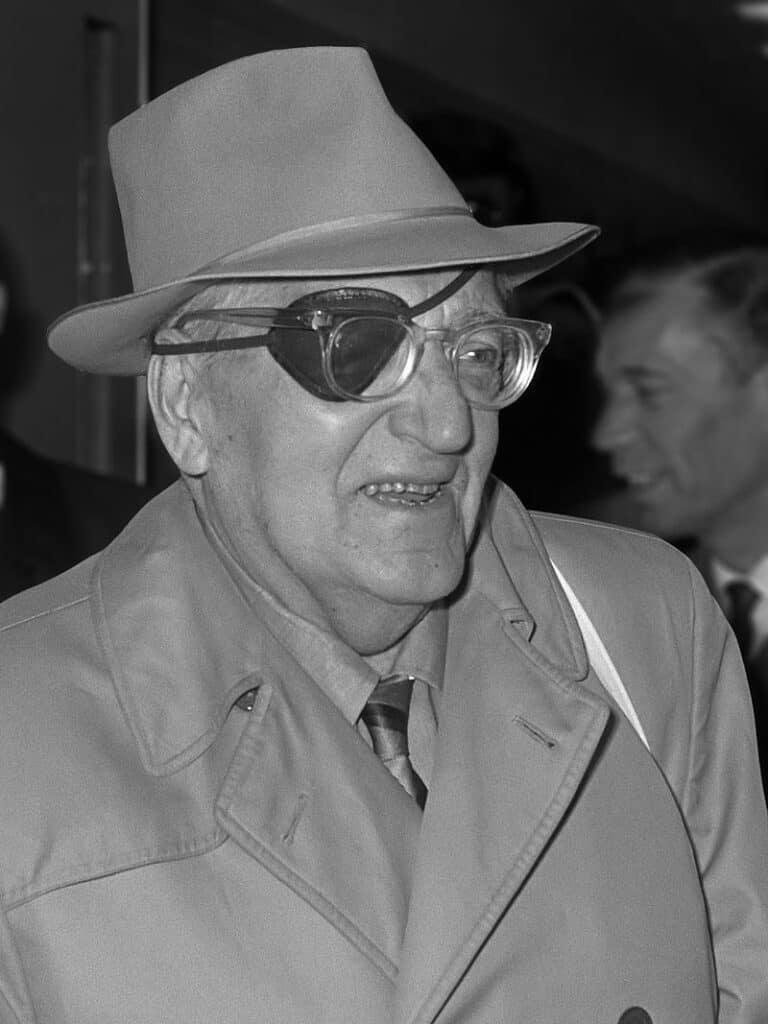
Fritz Lang’s Filmmaking
Austrian-German director Fritz Lang started making films in the German Expressionist style after World War One. With his use of striking contrasts between light and shadows, Lang earned the nickname “the Master of Darkness”, and his film M from 1930, which chronicles the search for a serial-killing pedophile, is generally considered as one of the most important precursors to film noir. Other notable works include Die Nibelungen (1924) and the Dr. Mabuse trilogy, the last of which, The Testament of Dr. Mabuse, was filmed in 1933, and was considered an anti-Nazi film as Lang had directly quoted Nazi phrases in the dialogue. A screening of the film was by Reich Minister of Propaganda Joseph Goebbels, and the film was later banned on the grounds that it was a threat to public health and safety. The story goes, however, that Goebbels called Lang into his office to inform him that his film was going to be banned, but nevertheless offered him the position of head of the German film studio UFA. Apparently he was deeply impressed by Lang’s filmmaking, in particular Metropolis (1927). It was during this meeting that Lang decided to leave Germany: he moved to Paris, and then emigrated to the United States, where he went on to become a Hollywood legend.
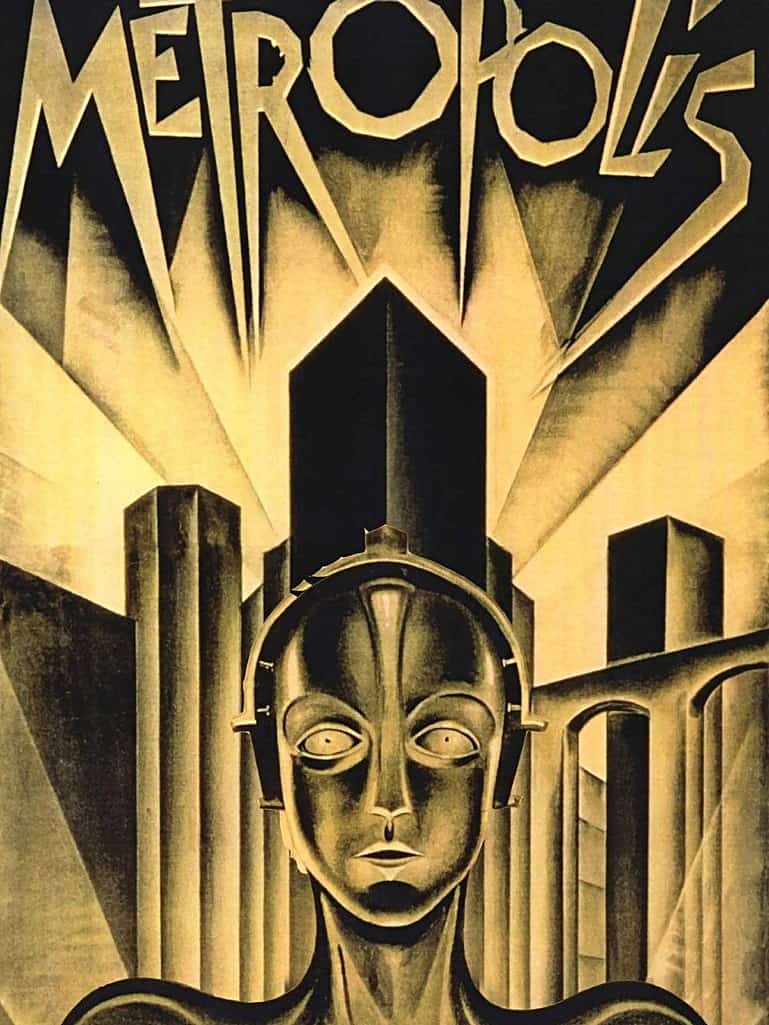
Metropolis
Metropolis is set in a dystopian future, the then-distant year of 2000. The movie depicts a deeply-divided world, where rich overlords enjoy life in luscious gardens, palaces, and run the city from high up in their expensive skyscrapers, while armies of workers slave away deep below the earth, servicing the great machines that power the city.
Freder, the son of the city’s ruler, falls in love with the beautiful working-class prophetess Maria, who preaches that the rulers and workers should come together in harmony, and prophesies that a mediator will come to bring the different social classes together. After experiencing his father’s indifference towards the harsh conditions faced by the workers, Freder trades places with a worker and goes to the scientist Rotwang for help. The scientist shows him a robot he has built, which he later gives the likeness of Maria in a plot devised by Freder’s father to use her to prevent a rebellion among the workers. However, Rotwang intends to use the robot to kill the city’s ruler and take over Metropolis. In the end, Rotwang is killed and Freder fulfils his role as the mediator, by bringing together his father and the workers.
Metropolis was the most expensive film ever made at the time, and groundbreaking special effects were used, such as the Schüfftan process, in which actors were projected onto miniature models sets by using mirrors, in order to create the impressive city scenes. According to Lang, a visit to New York City inspired his vision of Metropolis and its dazzling skyscrapers: “I looked into the streets – the glaring lights and the tall buildings – and there I conceived Metropolis. The buildings seemed to be a vertical sail, scintillating and very light… suspended in the dark sky to dazzle, distract and hypnotize”.
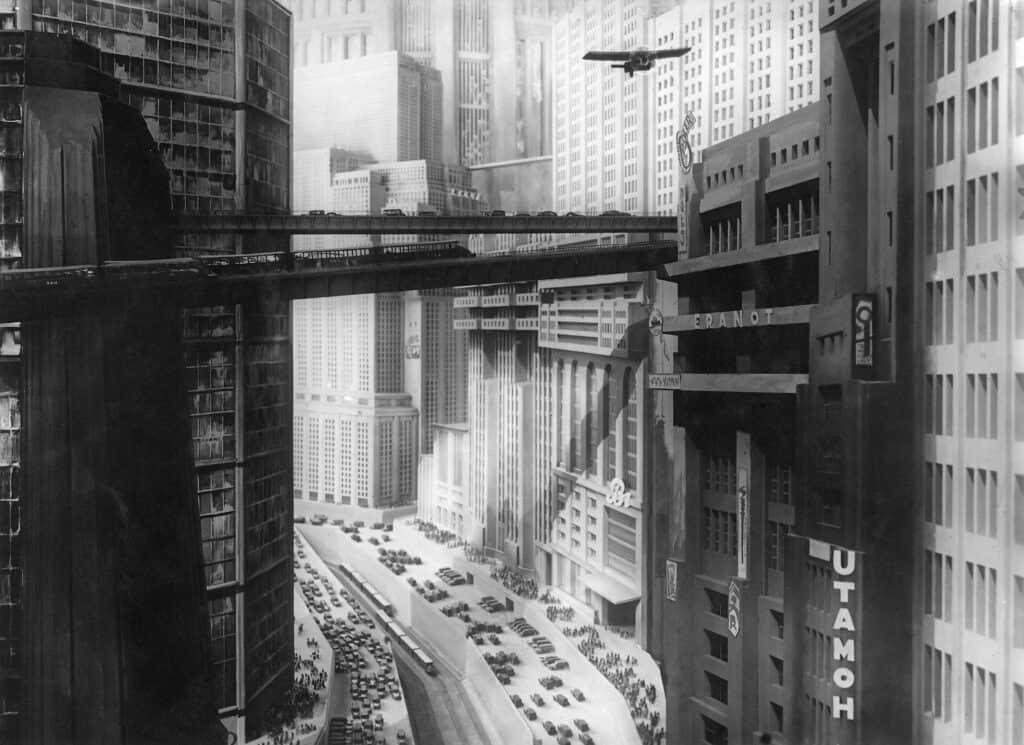
Art Deco Influences in Metropolis
Fritz Lang was inspired by various art movements and architectural styles. One of the major influences was Art Deco, which grew out of the Art Nouveau style and took inspiration from the geometric forms of Cubism, as well as from Constructivism, Functionalism, Modernism and Futurism. Art Deco was characterised by the use of vivid colours, bold geometric forms, lavish ornamentation and new materials like aluminum, stainless steel, chrome and plastics. The style soon became synonymous with luxury and technological progress.
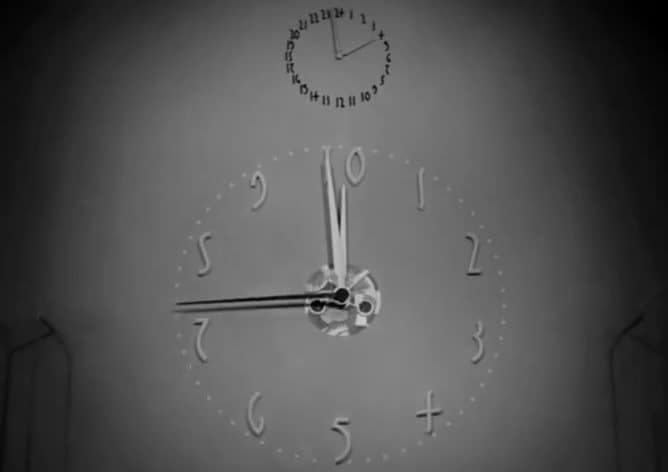
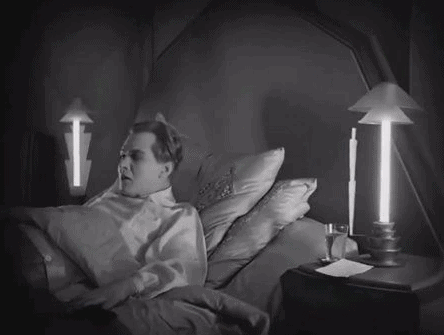
Art Deco was especially present in architecture and design from the 1920s to the 1940s, and in Metropolis, the style can be seen in the magnificent skyscrapers made of smooth stone, the dazzling angular skyline, and the interiors of the skyscrapers with their classy offices. Art Deco features like the clock design on the wall of the city ruler’s office, or the lamps in the bedroom of his son, compliment the Modernist design of the interior design.
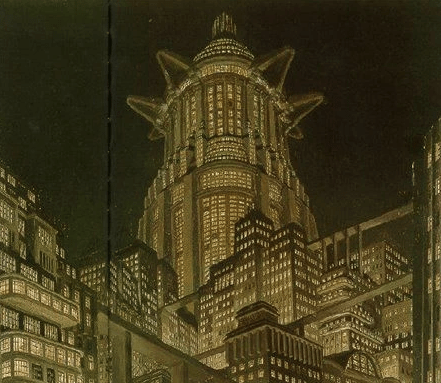
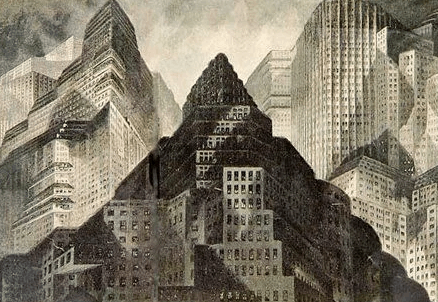
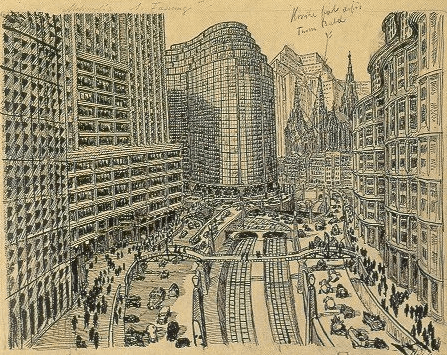
The production designer, art director and set designer Erich Kettelhut worked together with artists Otto Hunte and Karl Vollbrecht to design the impressive Metropolis cityscape and interiors. Kettelhut’s sketches show how the style of Art Deco inspired the team and found its way into the film’s design.
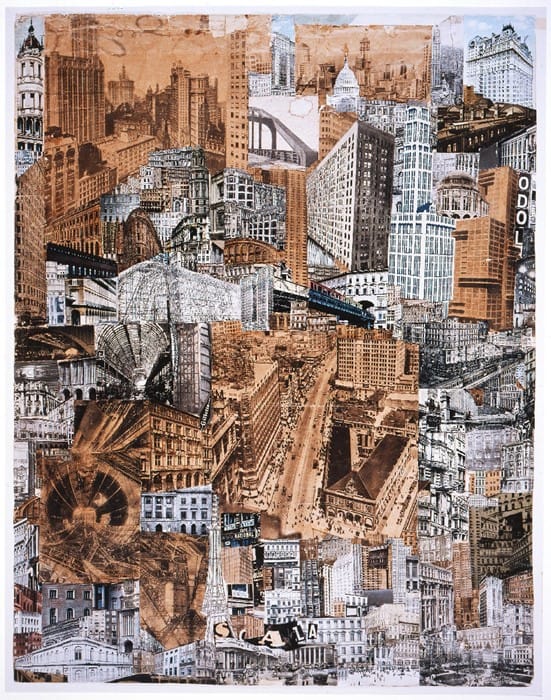
Bauhaus Influences in Metropolis
Bauhaus, the art school in Germany founded by architect Walter Gropius with the main goal to merge traditional arts and crafts with modern technologies, also influenced the style of Metropolis to a considerable extent. Based on the idea to create a total work of art, in which all artistic disciplines could be brought together, the Bauhaus style was marked by the absence of ornamentation and by a harmony between the function of an object or building and its design. Its influence could be found across a wide range of fields ranging from visual art to architecture, graphic design, interior design, industrial design, and typography.
Former Dadaist artist Paul Citroen lectured at the Bauhaus, and made a series of photographic montages entitled Metropolis, which appeared around the time that Lang was working on his film, and certainly may have influenced him – Lang himself had an architect father, had briefly attended engineering courses, and was associated with several of the Bauhaus artists.
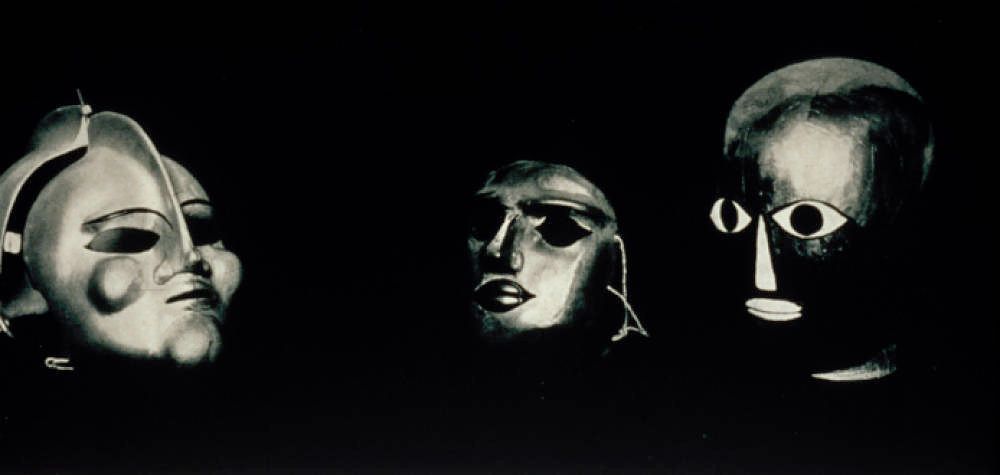
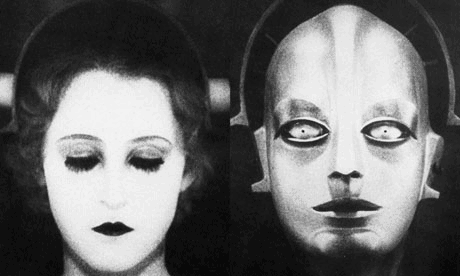
Several of the Metropolis buildings bear a resemblance to architecture designed by Mies van der Rohe, the last director of the Bauhaus, and the stylistic formal geometry of the mise-en-scène in Metropolis relates to the New Sobriety (Neue Sachlichkeit) direction of the Bauhaus. Finally, taking a look at Oskar Schlemmer’s experiments with people, masks and geometric forms, for example in his Triadic Ballet (1922) or his Bauhaus Masks, shows how aligned these aesthetics and concerns are with those of Metropolis. With his Maschinenmensch (machine-human) robot, Lang created a design icon, which shares many similarities with Oskar Schlemmer’s masks and design. The costume was created by sculptor Walter Schulze-Mittendorff, who made it from a type of wood-filler that could appear metallic. A body plaster cast was made of Brigitte Helm, the actress who played Maria.
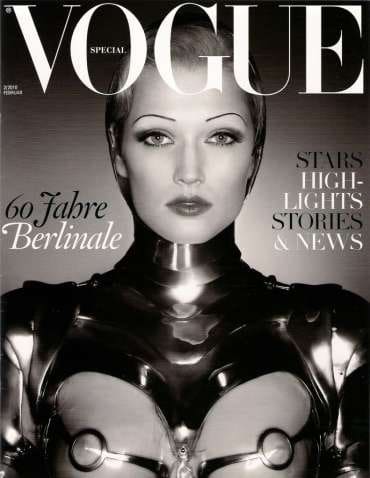

The Influence of Metropolis on Contemporary Art and Culture
The influence of Metropolis itself on art and culture since its release cannot be understated. In 2010, Karl Lagerfeld created a fashion spread for Vogue magazine, inspired by the robot from Metropolis. In 1984, Georgio Morodor made a pop soundtrack to accompany the silent film, which was originally accompanied by an original orchestral score by Gottfried Huppertz. In Morodor’s soundtrack, rock stars like Adam Ant and Freddie Mecury contributed their sound. Queen even used footage from Metropolis for their music video Radio Ga Ga, and movies like Blade Runner took their cue from the Metropolis-style visions of the future, with towering buildings making up a moody cityscape.
Metropolis continues to inspire artists and designers today, and the movie remains an absolute classic that merits rediscovering time and again.
Relevant sources to learn more
Read more about the art movements and styles described in this article



